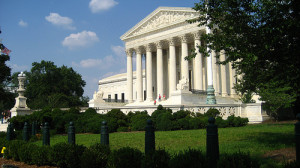It seems that most bankruptcy decisions by the U.S. Supreme Court involve individual debtors, and the Supreme Court’s latest opinion is no exception. Even though the decision is not in a business bankruptcy case, it examines the bankruptcy court’s powers under Section 105(a) of the Bankruptcy Code. Section 105(a) is commonly invoked in business bankruptcy cases to prevent business disruption through “first day” motions and orders, as part of a Section 363 sale of assets free and clear of liens, and in granting other relief to facilitate a debtor’s reorganization. This fact makes the Supreme Court’s most recent decision, discussed below, of interest for both individual and business bankruptcy cases.
The Key Holding: Exempt Property Really Is Exempt. In an unamimous decision issued on Tuesday, March 4, 2014 in Law v. Siegel (click on the link for a copy of the opinion), the Supreme Court held that a bankruptcy court cannot surcharge a debtor’s homestead exemption to pay for the Chapter 7 trustee’s administrative expenses, even if those expenses were incurred as a result of the debtor’s fraudulent misrepresentations.
- The bankruptcy court had surcharged the debtor’s $75,000 California homestead exemption to cover the trustee’s fees and costs, but the Supreme Court reversed. It held that Bankruptcy Code Section 522(k)’s explicit language that a debtor’s exempt property “is not liable for payment of any administrative expense” (other than in inapplicable and specific circumstances detailed in that section), precludes a bankruptcy court from invoking either its authority under Section 105(a) to issue orders to “carry out” the provisions of the Bankruptcy Code, or its inherent sanctioning powers, to surcharge the debtor’s homestead exemption.
- In short, where Congress has declared a debtor’s exempt property off limits, a bankruptcy court cannot not use Section 105(a) to override that specific statutory limitation.
Implications For Business Bankruptcy Cases? As a business bankruptcy blog, the focus here is on whether the Supreme Court’s decision tells us anything about a bankruptcy court’s powers outside the exempt property context (especially since corporate debtors cannot claim exemptions). At first blush, the Supreme Court’s decision is, of course, a direct rejection of the use of Section 105(a), at least to impose a surcharge on exempt property. But does the decision otherwise weaken a bankruptcy court’s powers under Section 105(a) and its inherent powers?
An insight into the answer seems to come at the very end of the decision. After acknowledging that its holding imposes a heavy financial burden on the Chapter 7 trustee, and could lead to inequitable results in other cases, the Supreme Court addressed what else a bankruptcy court could do to respond to a debtor’s misconduct:
Our decision today does not denude bankruptcy courts of the essential “authority to respond to debtor misconduct with meaningful sanctions.” Brief for United States as Amicus Curiae 17. There is ample authority to deny the dishonest debtor a discharge. See §727(a)(2)–(6). (That sanction lacks bite here, since by reason of a postpetition settlement between Siegel and Law’s major creditor, Law has no debts left to discharge; but that will not often be the case.) In addition, Federal Rule of Bankruptcy Procedure 9011—bankruptcy’s analogue to Civil Rule 11—authorizes the court to impose sanctions for bad-faith litigation conduct, which may include “an order directing payment. . . of some or all of the reasonable attorneys’ fees and other expenses incurred as a direct result of the violation.” Fed. Rule Bkrtcy. Proc. 9011(c)(2). The court may also possess further sanctioning authority under either §105(a) or its inherent powers. Cf. Chambers, 501 U. S., at 45–49. And because it arises postpetition, a bankruptcy court’s monetary sanction survives the bankruptcy case and is thereafter enforceable through the normal procedures for collecting money judgments. See §727(b). Fraudulent conduct in a bankruptcy case may also subject a debtor to criminal prosecution under 18 U. S. C. §152, which carries a maximum penalty of five years’ imprisonment.
But whatever other sanctions a bankruptcy court may impose on a dishonest debtor, it may not contravene express provisions of the Bankruptcy Code by ordering that the debtor’s exempt property be used to pay debts and expenses for which that property is not liable under the Code.
Conclusion. The Supreme Court’s discussion of the range of actions a bankruptcy court could take to address debtor misconduct helped narrow the decision to situations where a bankruptcy court uses Section 105(a) in contravention of express statutory language. The Supreme Court’s effort to make clear that, outside of those settings, bankruptcy courts possess a broad range of authority, specifically including under Section 105(a), Bankruptcy Rule 9011, and its inherent powers, seems to reinforce, rather than weaken, the power of bankruptcy courts. That makes this decision important for individual — and business — bankruptcy cases.


